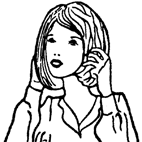 Piano Sonata No. 1 (Toccata Furioso) is now available on Bandcamp. It’s a relentless fractal cyclone of microtonal madness, pushing rigorous systems and the concept of the piano as a keyboard instrument to the edges of chaos…
Piano Sonata No. 1 (Toccata Furioso) is now available on Bandcamp. It’s a relentless fractal cyclone of microtonal madness, pushing rigorous systems and the concept of the piano as a keyboard instrument to the edges of chaos…
A pianist with three hands is playing three pianos at the same time. One hand to each keyboard. Each piano is tuned to a different scale; each scale is made of unique pitches, with no repeating notes, no octaves. None of the pianos share a common pitch between them. Our pianist not only has long arms; the fingers are also unusually long and flexible, so that each hand may cover the entirety of its respective keyboard. Each hand, of course, has only five fingers and so no more than five notes may be played on each piano at any time.
“Why make it a piano?” she asked. I finished my beer before replying. You strike the key and the piano does everything else. It’s like a computer: once you’ve executed the command, it’s out of your hands. The piano, eschewing the use of breath or continued touch, functions no differently than a digital device. “It’s transparent,” I said. You create a new synth patch and people try to figure out what it sounds like. With a piano, people don’t think about the instrument and listen to what the piano is doing instead.
Each of the pianist’s fingers is individually playing complex curves across the keyboard. The curves are segments of 1-dimensional projections of fractals created by iterated function systems; specifically, chance mutations of the Barnsley fern. The curves may be projected onto the keyboard in different ways. Each finger may be playing the same curve segment in different projections, different segments of the same curve, or different curves entirely. From one period to the next, the hands may all play in the same tempo, in different tempi, or with individual fingers in the same or different tempi. These tempi may change or stay the same. Dynamics are subject to the same possible combinations, independent of tempo. All these decisions, as well as other considerations such as length of each period and choice of hands, were guided by chance. The odds were weighted in favour of fast and loud, and the guidance was almost always strictly followed.
Does it still sound like a piano? Probably. In this instance, the sound of the piano is a simulacrum of a piano. A virtual representation of a real instrument; that instrument freighted with multiple burdens of bourgeois romanticism, modernist experimentation and reactionary postmodern attempts at negation. The Sonata is an initial expedition towards incoherence. There is no harmonic logic to the tuning or rhythmic logic to the simultaneous tempi. In form, the instrument retains its familiar representation as a vehicle for the manifestation of theory; in sound, it perhaps has become a little alienated from itself. “Last one,” I say but she explains she’s already called time.
A second sonata is in progress.
